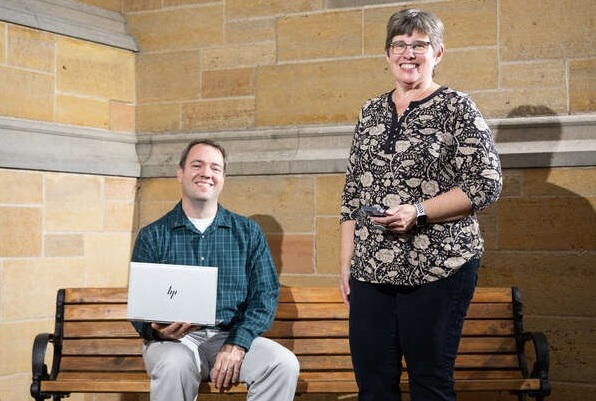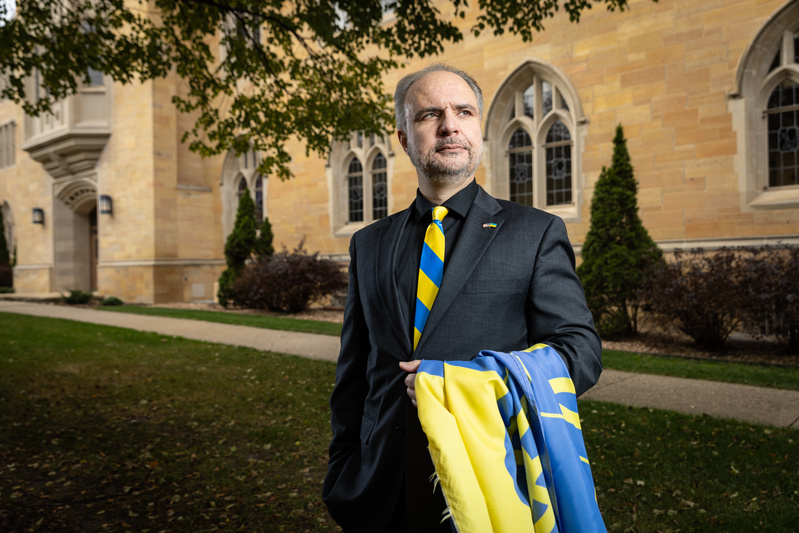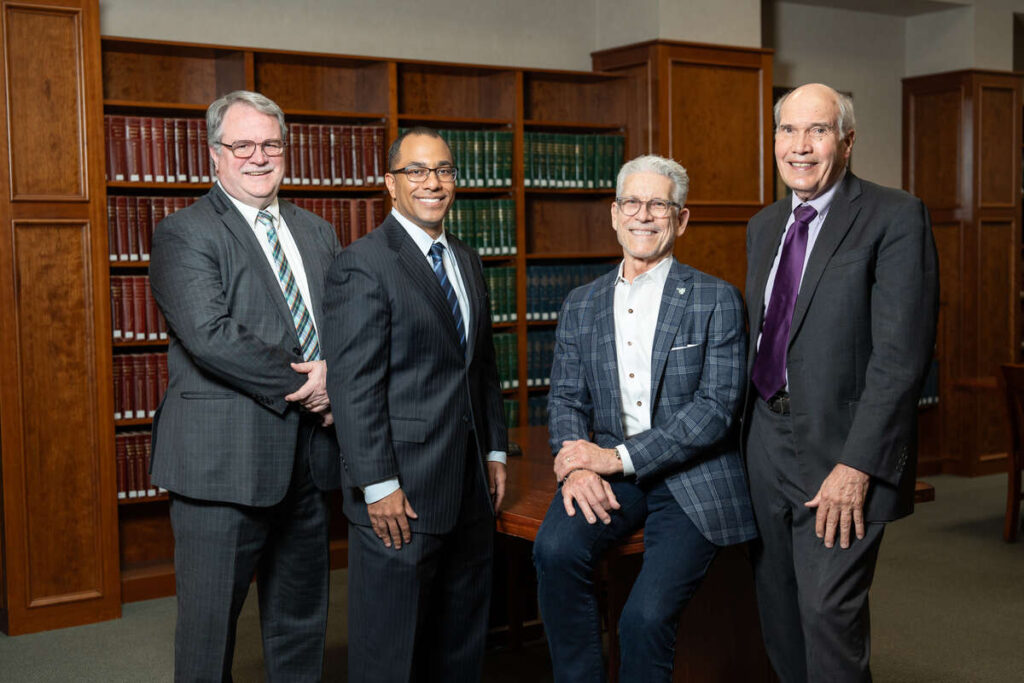Opus College of Business faculty reveal race, gender impact on hiring.
Inside of Professor Kevin Henderson’s classroom, the students are engaged. They ask questions that show more than their grasp of the topic at hand; they also ask questions that spur Henderson’s research topics.
“During a lecture about (corporate hiring practices), students asked me how companies use social media to screen job candidates,” Henderson said. The University of St. Thomas professor of management answered based on what he knew, but as is indicative of the private university’s faculty who delve into their work, Henderson decided to do some homework of his own. The result: an academic paper he co-authored with Associate Professor Liz Welsh on LinkedIn’s role in the hiring process. Their findings: Race – not gender – has positive influence on the recruiting and hiring process among certain groups.

“We didn’t see much research out there on LinkedIn,” Henderson said, explaining why they focused on the professional networking site with 875 million business-minded users. “Given that social media allows users to see pictures – and thus infer demographic characteristics from a candidate prior to potentially even making an offer – we were very concerned about that.”
Henderson and Welsh, who have collaborated on other projects before, are currently submitting the paper to industry journals for publication. Henderson has been previously published on a related topic. He conducted an exploratory study a few years ago that was published in Organizational Dynamics in 2019.
A close look at LinkedIn
The duo examined across four experimental studies whether manipulating the name and photograph of two otherwise equivalent LinkedIn candidates would influence evaluations of candidate qualifications, their chances for being hired and overall perceptions of the candidates.
The professors conducted their study in collaboration with the St. Thomas E-Learning and Research (STELAR) center with a goal to determine if there is any evidence of adverse impact.
Key to their study were Jane Williams and John Williams. They are the job applicants the professors created, giving them career profiles that looked similar to the profiles of LinkedIn users. Jane and John were also given reasonably similar work experiences.
“We tried to make the two profiles as equivalent as possible, but didn’t want to use the exact same profile, as participants would’ve noticed that,” Henderson said.
The research team used six different photos to vary gender and race (men and women, African American, Asian and white).
“We basically tried to manipulate the picture while keeping the profile content the same, and then randomizing it as much as we could to see if there was an impact based on changing the gender and race,” Henderson said.
For the research scenario, more than 900 St. Thomas undergraduate students and approximately 400 respondents from a national survey company were tasked with analyzing profiles to possibly hire a front-line manager of a hotel. Henderson and Welsh chose that job because it’s generally a gender-balanced one.
“Human resources has tried for a long time to become less biased, but LinkedIn is now one of the No. 1 ways that corporations find candidates,” Welsh said. “This is really a conundrum, because the face, name and picture tell you everything – age, gender, race, tattoos or no tattoos. All of those things are right there for people to see, and we know that first impressions matter. We can’t just use LinkedIn the way that we used to use resumes, because they’re not the same.”
The findings
There was no evidence that gender mattered, according to their research results. Neither the St. Thomas students nor the survey company respondents evaluated men versus women significantly differently.
To see if details mattered, the researchers changed information in candidates’ profiles, such as listing specific responsibilities held in previous positions to just companies and job titles.

“In both instances, when students showed a preference, it was the opposite of what we expected,” Welsh said. “They actually preferred candidates of color over white candidates.”
St. Thomas students had differing opinions than survey company respondents, working adults who were on average 35-40 years old. That was the second main finding: Race match mattered for the survey company respondents.
“With the full profiles, if the race of the person making the choice matched the candidate’s race, there were positive candidate outcomes,” Welsh said. “Interestingly, when we stripped out some of that information to just include companies and job titles, the relationship reverses. In that case, participants preferred candidates of other races more than their own. It’s a story that’s not straightforward … it had to do with the quality of the profile.”
What’s next
The study results have implications for principled leadership.
“Given that we found racial matches influencing the results, it’s helpful and beneficial for companies to have as diverse of hiring committees as they can,” Henderson said.
Henderson and Welsh have collaborated on two other studies – one published in the Journal of Business and Psychology on psychological contracts and one published in the Journal of Managerial Issues (with their colleague Erica Diehn) on managing one’s boss.
They currently are submitting an article on the LinkedIn study findings for possible publication by a journal.
“Liz and I have very similar interests in terms of research, wanting it to be applicable and useful – not just research for the sake of research,” Henderson said.
Perhaps the duo’s next research topic will stem from a vibrant class discussion.







